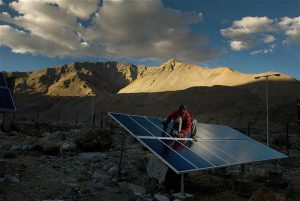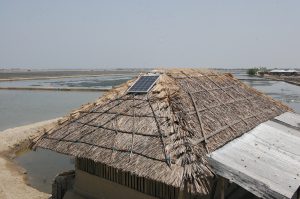The European Commission’s proposed contribution to a potential climate deal at Paris talks later this year – including a 40% cut in greenhouse gas emissions by 2030 – lacks ambition when set against the bloc’s plans for low-carbon energy, analysts said.
The EU executive’s climate plan was published in Brussels on Wednesday alongside a proposed ‘Energy Union’ that aims to speed up deployment of low carbon electricity, improve cross border power links and raise levels of energy efficiency.
Other big emitters such as China will be scrutinising both documents closely to calculate the additional effort that the EU is making to cut its emissions 40% below 1990 levels and how such a reduction would be achieved.
Analysts who monitor EU climate policy said member states should raise the level of ambition contained in the Commission’s plans before and during a UN summit in Paris at the end of the year, when a new climate treaty is expected to be agreed.
“The EU could reap further economic benefits and boost energy security if it were to set an even stronger emissions target,” said Jennifer Morgan of the World Resources Institute.
She added: “Research shows that Europe can cost-effectively achieve a reduction target of 49% by cutting natural gas imports in half and investing in renewable energy and energy efficiency. The EU can clearly do more to capture cost-savings, create green jobs and protect the environment.”
However EU countries are divided on how ambitious the bloc should be in cutting emissions, with coal-intensive states such as Poland arguing that a tougher target than 40% would bleed jobs and give other major emitters an economic advantage.
Watering down effort?
Morgan and other commentators have urged the EU to clarify how they will count land use forestry towards the 40% target, which if accounted for in a certain way, could weaken the overall effort required from agriculture and buildings, two big sources of emissions.
“The formulation (in today’s EC document) is quite vague and leaves it open whether the EU will include forestry accounting in the 30% reduction target for the non-emissions trading scheme sector,” said Wendel Trio of Climate Action Network.
If EU countries decide to account for growth of existing forests in an aggressive way, then the 40% target could be diluted in effect to 35%, possibly leading to weaker effort from other countries, some analysts say.
EU leaders will discuss the document in the coming weeks with an aim that the bloc will submit its final national climate plan by the end of next month.
The climate plans, which in UN jargon are known as Intended Nationally Determined Contributions (INDCs) will form the basis of negotiations in Paris, and other big emitters such as China and the US are also expected to submit their proposals by the end of March.
While the INDCs will likely contain much that has been announced before on climate and energy policy, they will be packaged in terms of what countries can do to slow growth greenhouse gas emissions.
The targets and policies are likely to fall well short of what scientists say is required to avoid catastrophic changes in the world’s climate, although the EU has proposed that countries review and scale up their commitments every five years so that the world speeds up emissions cuts.
2050 cuts
The EU said countries should aim collectively at cutting emissions “at least” 60% from 2010 levels by 2050, a move that would imply greater effort from China, said Nick Mabey of climate policy consultancy E3G.
He added: “The biggest issue of interest will be how the “at least” language will be operationalised in 2015 and the framing of a 2050 goal.”
Developing countries say that the near-term burden of cutting emissions should be shouldered by rich countries who used coal since the industrial revolution, while China says it will only be able to peak emissions by 2030 once it has deployed renewable energy on a much larger scale.
– The EU should host an international conference on INDCs in November this year to compare effort and understanding of the national plans
– All G20 nations – which would include India and Saudi Arabia – to sign up to economy-wide carbon cuts by 2025.







